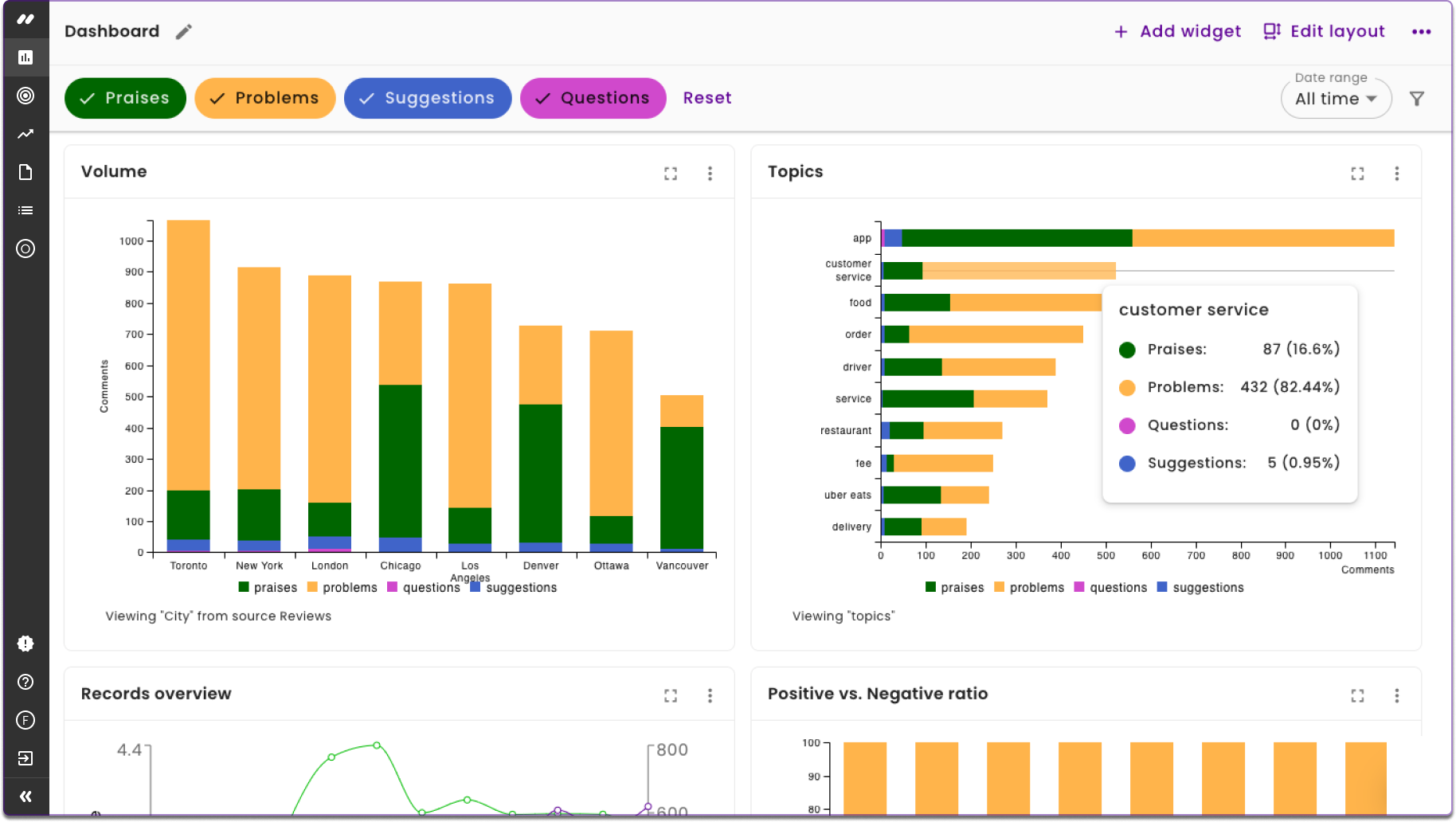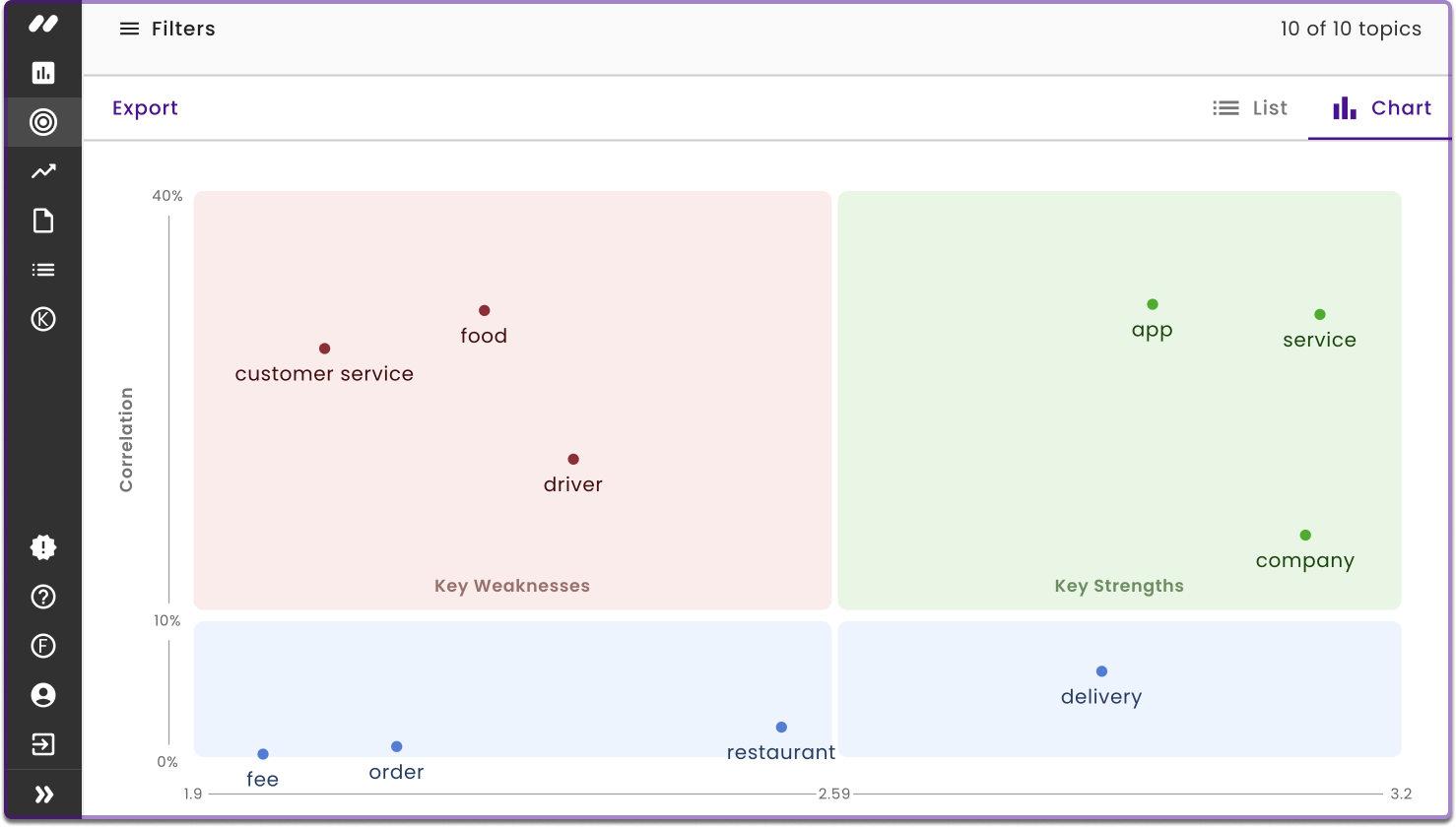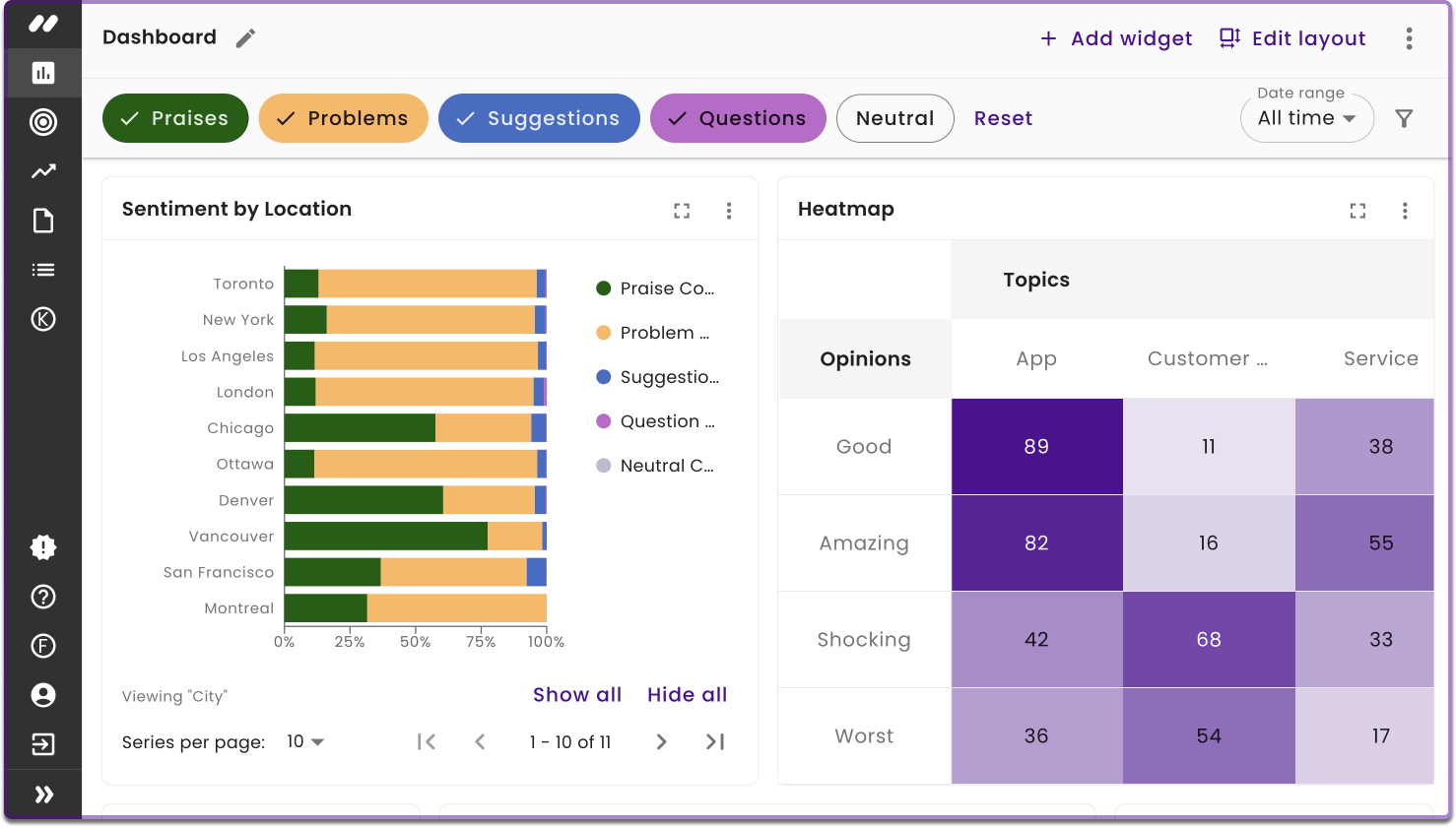Integration
Predict and act on customer issues from your survey responses in SurveyMonkey.


Connect to SurveyMonkey on Keatext’s Sources page by entering your SurveyMonkey login.

Choose a survey, date range, and metadata you want to analyze in Keatext on an ongoing basis.

Survey responses are pushed from SurveyMonkey to Keatext automatically for industry-agnostic text analysis.

Instantly process new responses from surveys in SurveyMonkey and uncover themes, intent, sentiment, and context to strengthen your analysis and prioritize issues.



Get AI-based recommendations to improve customer satisfaction by leveraging CSAT and NPS data to predict impact. Keatext’s quadrant chart provides an easy visualization of top issues.

Build, customize, and share Keatext’s interactive dashboards. Dive down into the customer verbatims behind Keatext’s survey analysis to better understand customer pain points.

Keatext is available on the SurveyMonkey app directory, making it easy to connect and set up the integration.
Keatext is hosted in the cloud and connects directly to SurveyMonkey through an API, without using third party tools.
Keatext’s help docs and customer support make your integration setup as smooth as possible.





Explore more of Keatext’s SurveyMonkey integration with a product demo. Our team of experts is available at your convenience! After your demo you’ll get a free, 2-week proof of concept to explore Keatext with your own customer or employee feedback data.